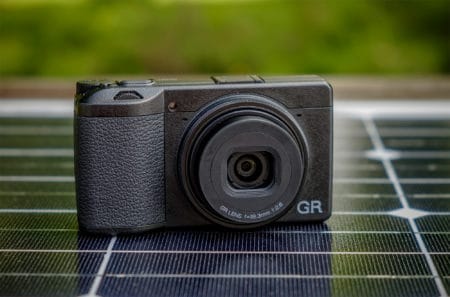
Is there a place for a professional camera in a world where smartphones are making steady progress in capturing the world around them? It turns out, yes, and the Ricoh GR III is another confirmation of this.
Message from the editor: Our defenders from the 115th brigade, which is now fighting in the east, need a pickup truck . Details for transferring funds to a monobank card – Polyanskaya Karine Sergeevna, card number 5375414101372265. We ask you to take part in the fundraising.
Glory to Ukraine!
from 32 592 UAH
Offers: 5
Variety of professional tools
Although all wrenches are used to tighten and loosen nuts, there are a wide variety of models on the market. There is something highly specialized, there is something almost universal. In cameras, the situation is identical. There are cameras that allow you to quite well solve a wide range of creative and technical tasks, and there are also very specific, but very convenient for their purposes. These include Ricoh GR III, and we will get to know him better.
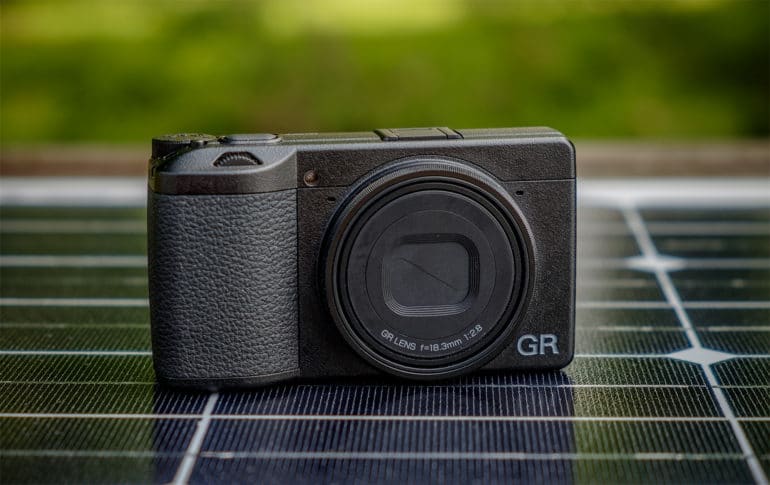
Form factor and positioning
The Ricoh GR III is a top-class compact camera with a fast 28mm equivalent fixed lens, APS-C sensor, a full range of manual, automated and automatic control of shooting parameters. Not the most common form factor on the market, three competitors come to mind offhand: familiar to many Fujifilm, present mostly at international exhibitions Sigma and overpriced Leica. Sony Cyber-shot DSC-RX1R II does not count due to price tag and release date. For the Ukrainian market, only Fujifilm is relevant, which, by the way, does not currently have a direct competitor for the Ricoh GR III. The Fujifilm XF10 is cheaper, resulting in a plastic body and fewer fine-tuning options. Fujifilm X100F, firstly, is larger in size, and secondly, it costs significantly more. Previous versions are comparable in price, for example, X100T , but they also do not fit in a shirt pocket.
Ricoh markets the GR III as a daily wear and street camera, emphasizing that it delivers (technically) professional image quality.
Design
The Ricoh GR III is indeed a very compact camera. It can easily “hide” behind any modern smartphone, although, of course, they cannot be compared in terms of thickness. However, the GRIII fits even in a shirt pocket.
The base of the case is made of metal, however, the manufacturer does not promise protection against impacts when dropped.
The lens is retractable, the front lens closes automatically with a shutter.

The power and shutter buttons are located on the top of the case, the exposure mode dial (with lock) and the hot shoe are also located there.
Above, on the ledge of the front panel, there is a parameter change dial, its functionality depends on the selected mode. Microphones are located on the sides of the lens, next to it is an autofocus backlight LED.
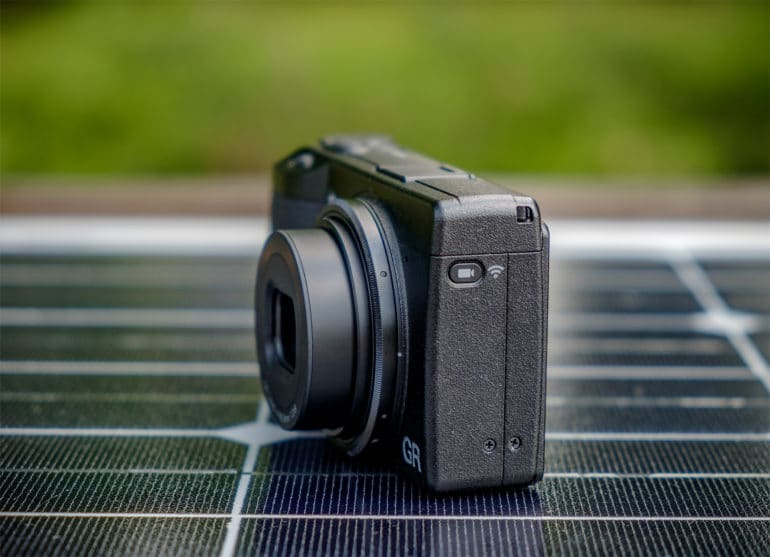
On the left side there is one hardware button, it is small and recessed into the case, the chance to press it by accident is small.

The rear panel is typical for this class of technology: a large LCD touch screen and controls grouped to the right.
The screen is hard-wired into the case, which is bad. Shooting from non-standard angles is more convenient if the display can be viewed not from a small, sharp angle.
Four hardware buttons, a five-way joystick with an independent ring and another two-position lever that understands pressure are more than enough for comfortable work with the camera. The controls are arranged so that (almost) all operations can be performed with one, right, hand. In order not to drop the camera, it is better to use a wrist strap, it comes with the package.

The socket for connecting the cable (USB Type C connector) is located on the right side of the case, under the cap.
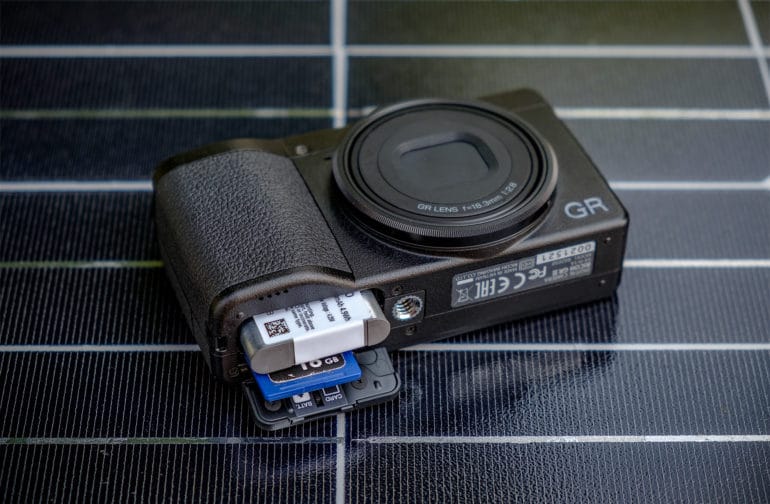
The battery and memory card are hidden under a cover on the bottom of the case, next to it is a metal tripod socket.

An adapter sold separately is used to install filters and an optical wide converter (as a result, the focal length becomes equivalent to 21 mm). It has a chip, which is necessary for the correct operation of the optical stabilization system, although this is not critical for filters (fitting thread 49 mm).
I hope you noticed that the description does not say a word about the built-in flash and viewfinder. They are not, but there are plug-in, in a hot shoe. Using a flash and a viewfinder at the same time will not work (you must admit that the scenario of their need in a pair is quite rare), but separately – please.

There are two versions of the optical viewfinder to choose from – for an additional fee – a regular one that covers the field of view of a 28 mm lens and an advanced one with two frames, one of which shows the frame boundaries at a focal length of 28 mm, and the second at 21 mm., it is calculated first of all to work with a wide-angle converter. In this case, the screen can be turned off completely, both for the convenience of building a frame and to save battery power.
If you need a flash, the camera is designed to connect three external, AF201 FG, AF 360 FGZ II and AF 540 FGZ II, all Pentax (for those who forgot, the Pentax brand is now owned by the Japanese concern Ricoh).
Lens
A fixed lens is always a double-edged sword.
Until you need a wide-angle converter, no additional expenses and dreams of “oh, if only so many more millimeters and with such and such an aperture.”
The absence of the possibility of changing the optics guarantees protection against dust on the matrix, especially outdoors.
A lens with a fixed focal length makes it possible to develop not a universal camera shake compensation system, but a narrowly focused one. Which is more efficient and cheaper. In the camera, it is three-axis, based on the shift of the matrix. The manufacturer talks about efficiency in 4 steps of exposure.
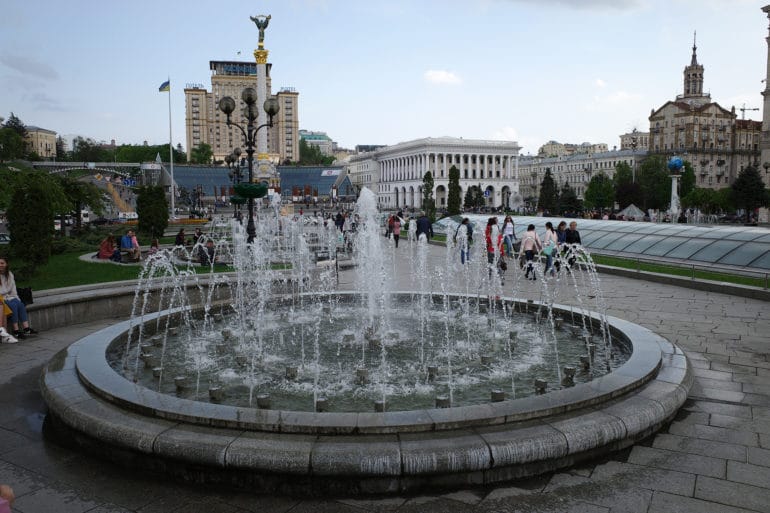
The equivalent of 28 mm is a fairly wide angle of view, you need to be able to work with it. To fill the frame space properly, you need to get close enough to the object. The portrait is rather full-length, otherwise, due to the peculiarity of the transfer of space, the picture will be perceived as a caricature. But the landscape – almost any. If you wish, you can experiment with macro. The increase will not be so significant, but the minimum distance to the object of 6 centimeters does not create problems with its illumination.
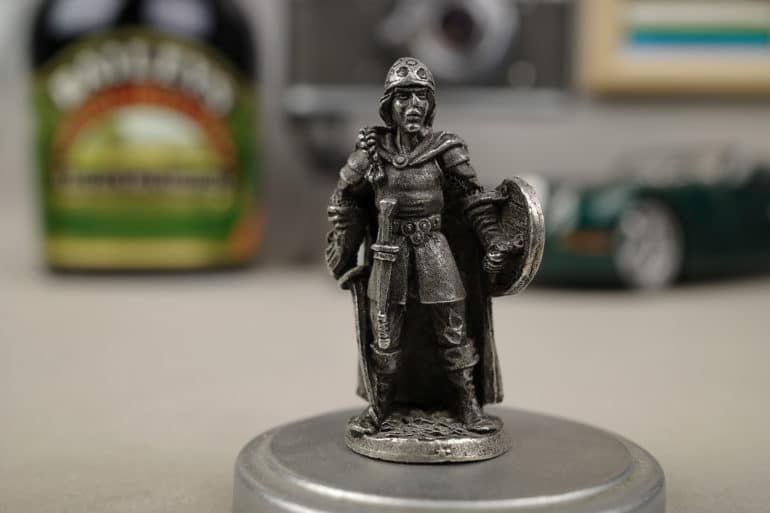
The Ricoh GR III offers in-camera framing to match the angle of view of a 35mm and 50mm lens for full frame. Of course, when processing on a computer, this can be done more conveniently and it is easier to select the desired part of the frame. It is important that thanks to the source material of 24 megapixels, even at 50 mm, 7 (3360 x 2240) remains, and this is enough for printing on a 20×30 cm format or viewing on a 4K screen.
The geometry, especially considering that the actual focal length of the lens is 18.3mm, is beyond praise. Distortion can be detected in synthetic tests, but it is not visible in the picture. Another thing is the blockage of vertical lines. If it is impossible to position the camera so that the optical axis is perpendicular to the verticals of the object, one can only hope for editing or, on the contrary, compose the frame so that the blockage of verticals looks like an artistic device.

Sharpness throughout the frame is excellent. Even at aperture 2.8. After 8, diffraction makes itself felt, and if closing the aperture serves as a means of increasing shutter speed, it is better to turn on the built-in neutral density filter, which adds two exposure steps.
Chromatic aberrations are practically absent.
The blur zone may not appeal to fans of cream bokeh, however, it does not spoil the picture. Point light sources on a dark background do not always look perfect; when you close the aperture, stars with many rays appear.
Functionality
The Ricoh GR III has a standard set of functions for a device of this class. For those who want to get acquainted with their listing, there is an official website of the manufacturer.
However, a couple of possibilities deserve special mention. The first is a preset distance to the subject, the second is three slots for storing (and instantly applying) custom presets.
Anyone who has shot fast-moving scenes knows that the main problem is the time it takes to select the focus point and actually achieve focus. And if you remember the film world? Scale on the lens? Recently, manufacturers of fixed-lens cameras have been resurrecting this useful practice digitally. Through the menu, the distance to the subject is set and the camera no longer thinks where it needs to move the lenses. In particular, the Ricoh GR III takes 0.8 seconds from waking up from sleep to opening the shutter. Several values of the distance scale should be noted: 1, 1.5, 2, 2.5, 5 meters and infinity. They simply change, and it is also possible to register them in one of three sets of user settings, switched from the exposure mode dial. As a result, the camera allows you to literally capture an interesting frame on the fly – it is much more difficult to get such a result on a smartphone.
Getting the key subject in focus on the Ricoh GR III is easy. In addition to the already mentioned presets, due to the wide angle of view, the lens often works at hyperfocal distances even at an open aperture.
The focusing system is hybrid, in addition to information from phase sensors, it uses the contrast of the boundaries of objects, there is also a face recognition system. You can select the focus point either with a five-way joystick or by simply touching the screen, and one of the modes is set in the menu – just specifying a point for the future, focusing immediately after touching the display, or even shooting after focusing.
When there is enough light in the scene, autofocus is fast and accurate, if there is little light, the camera may take a long time to find the correct position of the lenses. But given the aforementioned possibilities for manually selecting a distance, this is completely uncritical.
The Ricoh GR III does not have an anti-aliasing optical filter on the matrix. If there are objects in the frame that cause moiré, such as a close-up of fabric, the camera shake compensation system enters the fight against moiré. It is capable of shifting the matrix by a small, actually sub-pixel, distance during the exposure, as a result, sharpness is slightly reduced, and the effect of superimposing two regular textures is minimized.
Power supply
Battery Ricoh DB-110 with an operating voltage of 3.6 V with a capacity of 1350 mAh. It can be charged in the camera (i.e. not only from a stationary charger, but also on the road, for example, from a mobile battery).

It will not work to shoot and replenish the supply of electricity at the same time, here the “either-or” scenario, however, the spare battery is so small that it will not be difficult for especially demanding photographers to carry it with them.
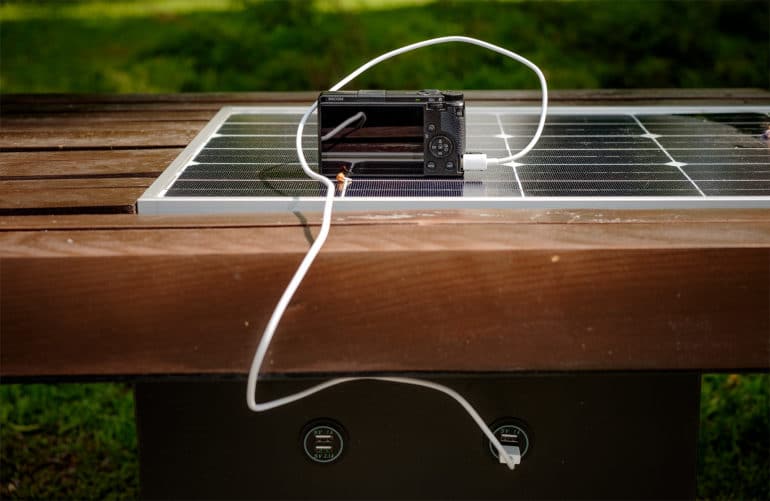
The manufacturer promises that at least 200 shots can be taken from a single charge. During the preparation of this material, the battery rarely lost more than one division on the indicator, but “survival tests” were not included in the plans precisely because of the simplicity of the charging process.
Image quality
In any digital frame, the technical quality has two incarnations – optical and electronic. We have already discussed optics when describing the lens, it is the turn of electronics.
Ricoh GR III writes 14-bit RAW files in DNG format. For Adobe, this format is native, however, there are questions about the white balance. The answer to them should be the correct camera profile, which was not in Adobe Camera Raw at the time of preparation of the material. It will not be difficult to make it for the target audience of the device, well, or put up with a deviation of 3-4 (in shadows) and up to 10 (in lights) units out of 256 RGB levels. In in-camera JPEGs with white balance, everything is fine.
For self-assessment, you can download the unedited files.
The new 24-megapixel sensor provides an excellent working range of sensitivity. It starts at ISO 100 and ends at ISO 12800, provided there is time and skill to process RAW. Yes, small details are already hidden by noise, but the noise itself does not look terrifying and can easily be used as a means of expression.
Of particular note is the corrective potential of RAW from Ricoh GR III. Five stops of underexposure is almost the equivalent of a five stop increase in ISO (in terms of noise and dynamic range), so at ISO 1600 it’s not hard to extract details from the shadows. With overexposures, the picture is not so impressive: +2EV is still acceptable, more is not worth it, since the dynamic range in the highlights will be greatly narrowed, and it will not be possible to extract details from them. The recommendation for shooting difficult lighting scenes is the usual one: expose for highlights, if there are very important details in deep shadows, then try bracketing.





